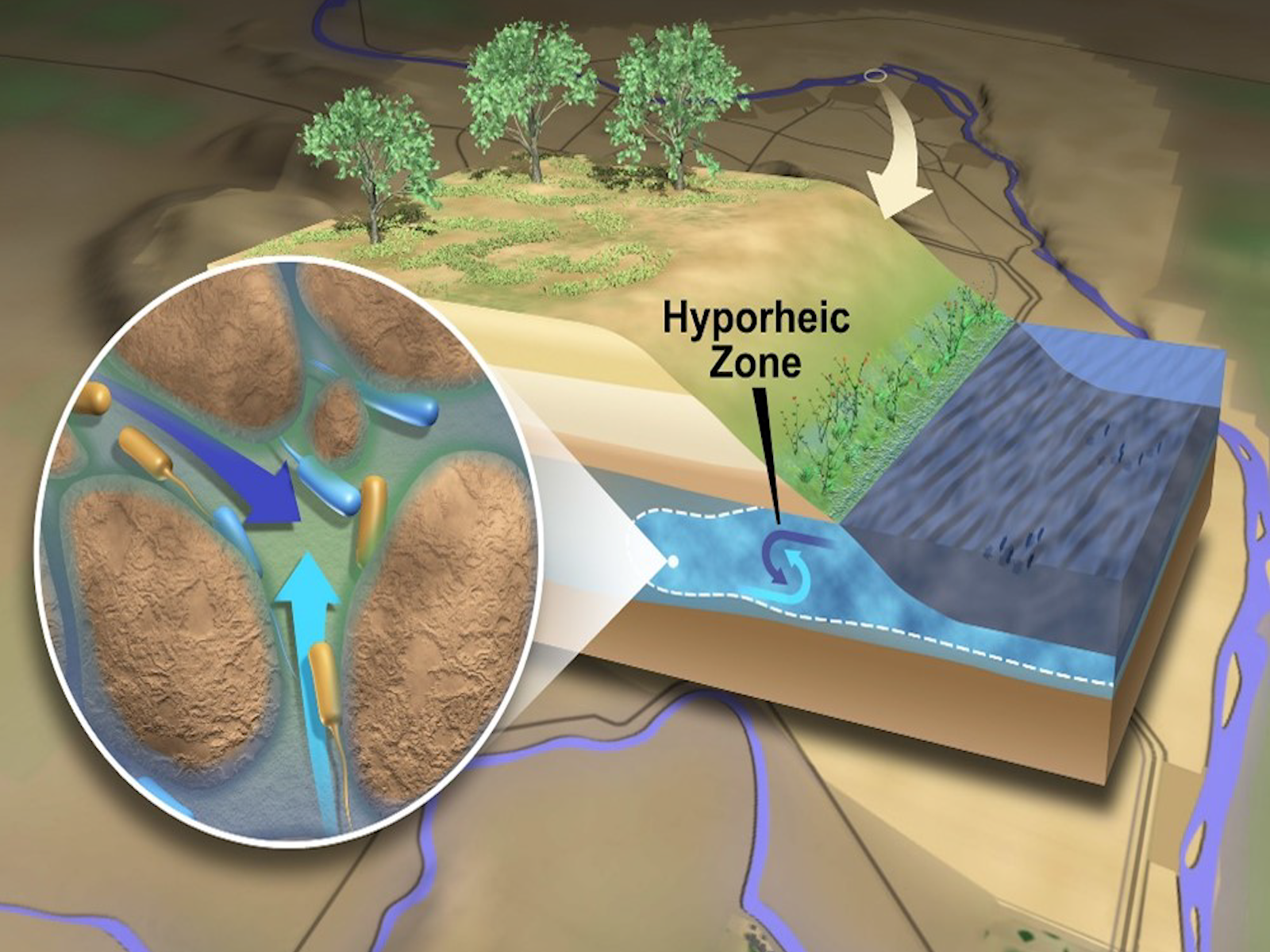The Role of Riverbank Microbes in Carbon and Nitrogen Cycling
First-of-its-kind genomic catalog lends insight into previously unknown processes at the river’s edge

After carefully cataloging the genes and functions of microbes and viruses living in the hyporheic zone along the river’s edge, scientists now have a clearer picture of the roles they play in the movement of carbon and nitrogen through the environment.
(Image: Pacific Northwest National Laboratory)
The Science
Rivers cover only a small part of the Earth’s surface, but their banks or edges make a big contribution to emissions of greenhouse gases like carbon dioxide and nitrous oxide. Microbes within the hyporheic zone—the sediment along the edge of the river where groundwater and river water mix—play a large part in these emissions. Scientists wanted to know which microbes were involved and how. Their efforts resulted in a first-of-its-kind catalog of microbes, viruses, and their genes, which decode the processes by which carbon and nitrogen move through the environment.
The Impact
The hyporheic zone is a biogeochemical hot spot for microbes. These microbes contribute up to 85% of carbon dioxide from inland waters and 30% of global nitrous oxide emissions. They can transform pollutants and serve as the foundation for food webs for other aquatic species, giving them substantial influence on overall river health. By creating a catalog of microbial and viral genomes and their genes, scientists can begin to understand the diverse functions of these microbes and quantify their influence on greenhouse gas emissions. This catalog can also serve as an enduring resource to further advance understanding of freshwater ecosystems.
Summary
A multi-institutional team of scientists gathered data on microbes in sediments collected from the hyporheic zone of the Columbia River near Richland, Washington. The team identified specific genes using instrumentation from the Environmental Molecular Sciences Laboratory (EMSL). The team identified more than 500 microbial metagenome-assembled genomes (MAGs) spanning 12 bacterial and archaeal phyla, along with 111 viral MAGs, which they then used to create a conceptual model of the roles of these microbes in organic matter decomposition, carbon sequestration, nitrogen mineralization, nitrification, and denitrification.
They integrated the data into a more detailed description of how those genes function, including the influence of viruses on the movement of carbon and nitrogen, and they also added geochemical measurements to support the catalog. The team’s work will guide new research to reduce uncertainties in models that help scientists predict changes in greenhouse gas emissions from river corridors in the future. It also resolves some of the microbial contributions that were thought to occur but were poorly defined in river sediments.
PNNL Contact
James Stegen, Pacific Northwest National Laboratory, james.stegen@pnnl.gov
Funding
This work was supported by Department of Energy’s Office of Science, Biological and Environmental Research program, and the National Science Foundation. Some data were collected using instrumentation at EMSL and the Joint Genome Institute, both DOE Office of Science user facilities.
Published: April 3, 2023
J.A. Rodríguez-Ramos and M.A. Borton, et al., “Genome-Resolved Metaproteomics Decodes the Microbial and Viral Contributions to Coupled Carbon and Nitrogen Cycling in River Sediments.” mSystems 7, 4 (2022). [DOI: 10.1128/mysystems.00516-22]